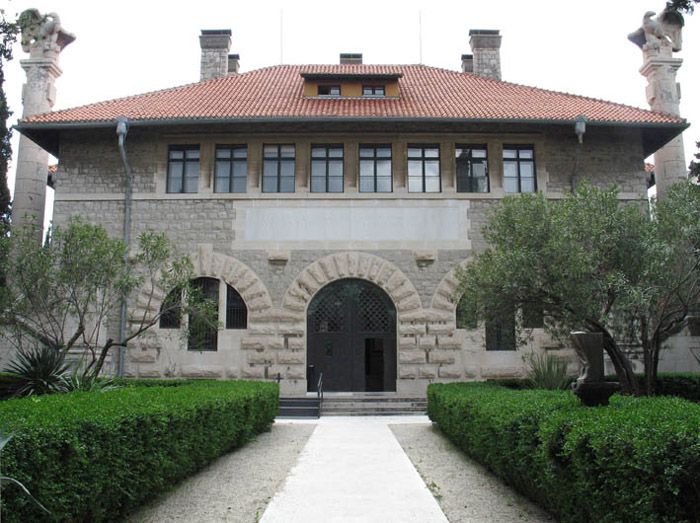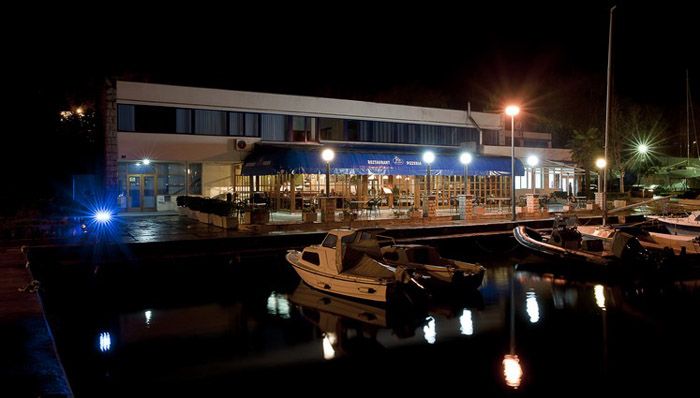Hajduk to Play Slavia Prague in Friendly Match
Hajduk will play Slavia Prague in a friendly at Poljud on July 7.
Don't Do That!: How to Stay Out of Trouble During Ultra Weekend
With Ultra Europe quickly approaching, we over at Total Croatia News are trying to get as prepared as possible. While we sit back and check off our own lists, we figured it would only be fair to share some of our insider tips and tricks with you for getting through this blowout of a 3 day extravaganza.
Nursing Your Ultra Europe Hangover? How To Enjoy Split While You Aren't At The Festival
Ultra Europe: Three days of explosive headliners, mind blowing visuals, intensive dancing and 40,000 of your best friends. Poljud Stadium in Split has created the perfect atmosphere to sweat it out under the hot summer heat in a pristinely ancient European city. Although we know the festival will take up most of your time in Split, it would be a shame not experience the plethora of built in amenities the city has to offer. Understanding your tired bodies will be in need of some daily R&R, here is a list of activities for you, whether you’re nursing a hangover or resting your tired legs. We promise we aren’t asking too much of you to fully imbibe in the Dalmatian experience.
We're One Month Away from Ultra Europe - Are You Prepared?
We know the months, weeks, days, and hours that are going into planning your Ultra Europe holiday, but with the festival just about a month away, do you have most items on your Ultra checklist checked?
Hajduk Begins Training Wednesday June 8!
On Wednesday June 8 beginning at 19h, the new coach of Hajduk, Marijan Pušnik, will hold Hajduk's first practice with the team on the main field at Poljud Stadium. The training will be open to the public.
Where To Stay In Split (5): Land Of Hajduk FC
For decades, the only activity associated with the neighbourhood called Poljud (pron. Pohlyood) in general Split mythology was football, or soccer, depending on which side of the Atlantic you're coming from. Local team Hajduk (Hidook), 103 years old and bigger than life in Split, has its home there since 1979, in a beautiful shell-like stadium. Since last year, however, there is another internationally recognized element of Poljud, both 'hood and stadium - Ultra Europe festival.
Poljud and nearby Spinut (Speanoot), settled on the northern side of Marjan hill, were only recently discovered as a possible place to stay while on vacation in Split, mostly because all attention was usually directed to the Old Town, and its neighbouring city parts. However, northern Split is very convenient for those not seeking a place to stay within the historical city core.

Most of the buildings - except in streets closer to Marjan - are rather new, built in the 1970s and 1980s, during Yugoslav times, meaning you will find typical socialism-era architecture, buildings raised for people working in local factories. It doesn't have to be as bad as it sounds, at least most of them are solid, fully equipped structures. In the last few years, since Split became a big thing in tourism, a lot of apartments were re-arranged into very decent accommodation. Another random AirBnB search for mid-June gave us a good deal of results.
Staying in Spinut/Poljud, as well as in some other newer neighbourhoods, is very convenient for those who arrive by car. It's much easier to find a parking space around buildings. Also, it's easily accessible from any direction, and going to an Old town for sightseeing is really a nice down-the-hill easy and short walk.

There are good sightseeing points in this neighbourhood too, some of them are among the major Split landmarks. We have already mentioned the stadium. Although it could be in better shape, the main attraction is the story of Hajduk, and any local will be more than happy to tell you about it.

The biggest cultural and heritage spot is by far the Archeological Museum, with an incredible collection of Greek and Roman artefacts.

Another interesting spot for history-lovers might be the monastery of Saint Anthony, just by the stadium, with a true rarity - an 18th century painting depicting Muslim prophet Mohammad, one of very few in Europe.

This neighbourhood is mostly residential, as we explained, and don't expect to find a lot of restaurants around. Some exceptions are around the sporting marina, where some middle class, but very reliable and inexpensive places are based, like Re di Mare, Lučica, Gusar, etc, with some of the most beautiful terraces in Split.

On the verge of this neighbourhood, there are also some of the main nightlife points in Split, like clubs Vanilla and Hemingway Bar. Maybe you won't like Croatian music there, but there are also some more versatile nights.
The downside of Poljud and Spinut might be that it's just too different from the parts of Split that maybe drew you here. It's a residential, family area, with not so much history around. Still, if you don't mind do a little walk, it can be attractive if you want to pay less for some comfortable accommodation. Except during the days of Ultra Europe, then you will always pay more.

To be continued
PREVIOUSLY IN WHERE TO STAY IN SPLIT
Choose Neighbourhood By Your Needs
Croatian Homeland War Museum to Be Built at Poljud in Split
An additional attraction coming to Dalmatia's Temple of Football.


